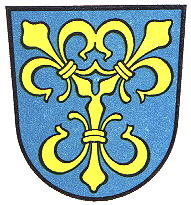Massing: Difference between revisions
Knorrepoes (talk | contribs) No edit summary |
Knorrepoes (talk | contribs) No edit summary |
||
| Line 8: | Line 8: | ||
State : [[Bayern]] | State : [[Bayern]] | ||
District (Kreis) : [[Rottal | District (Kreis) : [[Rottal-Inn]] (until 1973 [[Eggenfelden (kreis)|Eggenfelden]])<br> | ||
Additions : 1971 Wolfsegg; 1972 ; Malling (partly); 1978 Staudach | Additions : 1971 Wolfsegg; 1972 ; Malling (partly); 1978 Staudach | ||
| Line 30: | Line 30: | ||
[[Category:German Municipalities M]] | [[Category:German Municipalities M]] | ||
[[Category:Bayern]] | [[Category:Bayern]] | ||
[[Category:Rottal | [[Category:Rottal-Inn]] | ||
[[Category:Eggenfelden]] | [[Category:Eggenfelden]] | ||
Revision as of 12:59, 4 January 2015
| Heraldry of the World Civic heraldry of Germany - Deutsche Wappen (Gemeindewappen/Kreiswappen) |
MASSING
State : Bayern
District (Kreis) : Rottal-Inn (until 1973 Eggenfelden)
Additions : 1971 Wolfsegg; 1972 ; Malling (partly); 1978 Staudach
Official blazon
In Blau drei deichselförmig gestellte, zusammenhängende goldene heraldische Lilien.
Origin/meaning
The composition of the three fleur-de-lis first appears on the oldest seal of the town, dating from the mid 15th century. The origin of the composition is not known. It has been postulated that the arms are derived from the symbols used by the Lords of Massing in the 12th century. Their symbols (they probably did not yet use arms), however, are not known. In 1565 the arms were replaced by a new composition, with a hand coming from a cloud and holding a fleur-de-lis. These arms were used until the 19th century, when the historical arms were restored.
| The arms by Hupp in the Kaffee Hag albums +/- 1925 |
Contact and Support
Partners:
Your logo here ?
Contact us
© since 1995, Heraldry of the World, Ralf Hartemink 
Index of the site
Literature : Stadler, 1964-1971, 8 volumes; Hupp, O: Kaffee Hag albums, 1920s












